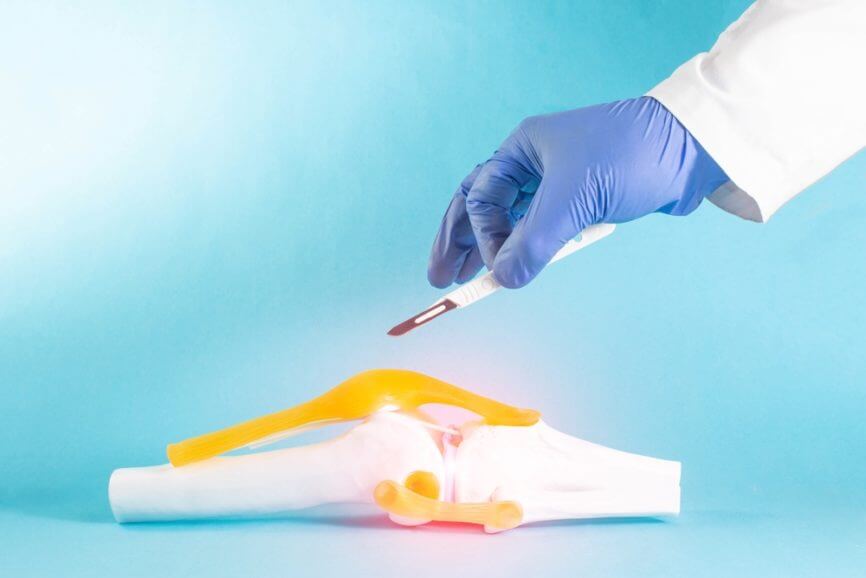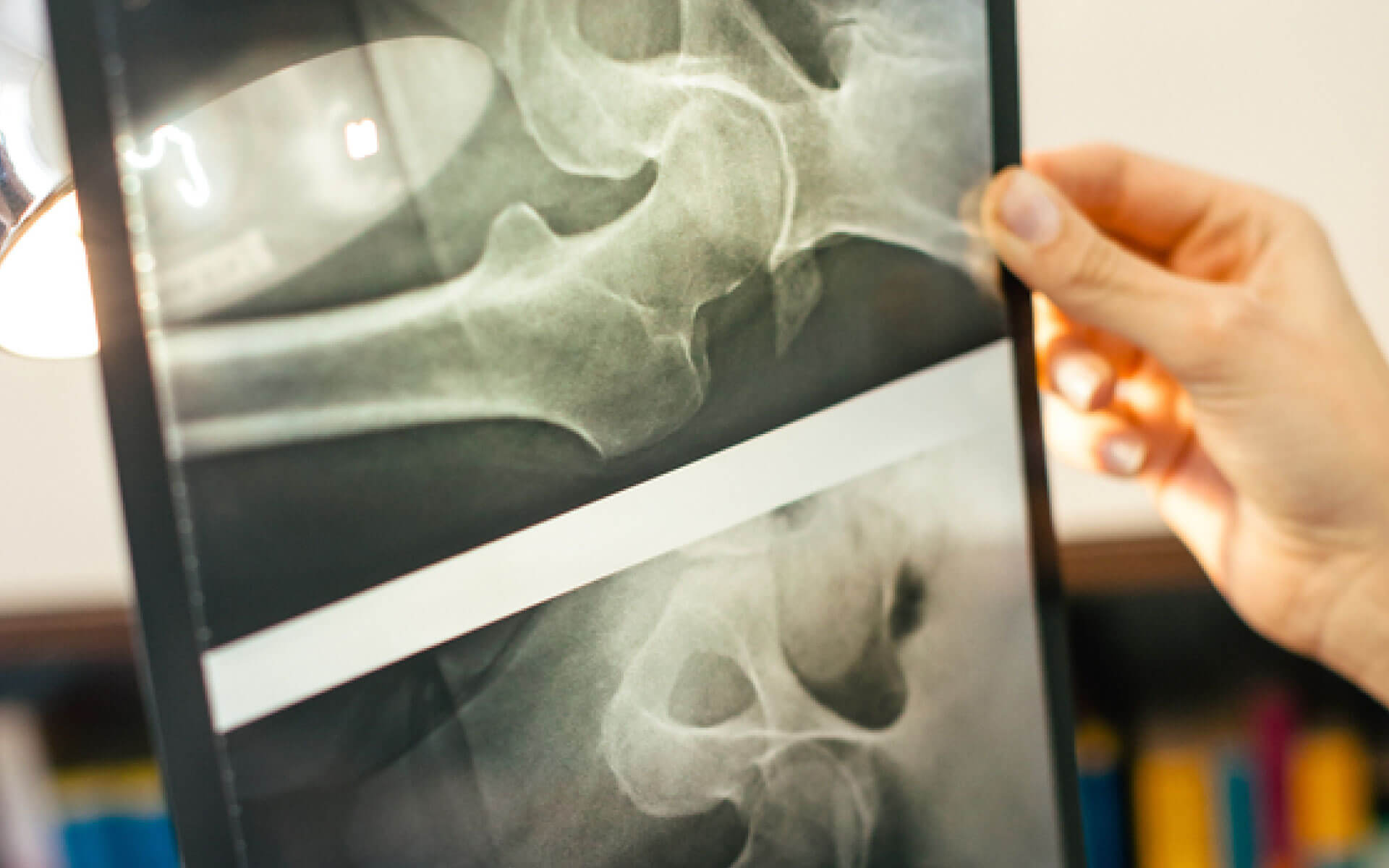After CMS’s rollout of the FY 2023 Hospital Inpatient Prospective Payment System (IPPS) Final Rule, we’ve had the pleasure of reading through all 3,226 pages. Previously we issued a more high level summary of the Hospital IPPS and the Total Hip Arthroplasty (THA) and/or Total Knee Arthroplasty (TKA) Patient-Reported Outcomes Performance Measure (THA/TKA PRO-PM). This blog will dive even further into some of the fine details of the THA/TKA PRO-PM!
Questions this blog answers:
- Eligibility Criteria
- What makes a procedure eligible for inclusion in the program?
- What makes a procedure ineligible for the program?
- What happens if a patient has a considerable health change after surgery?
- What facilities are excluded from participation?
- Where can I look to confirm if my hospital is required to participate?
- Methodology
- How did CMS come up with a 50% reporting rate metric?
- How did CMS determine the delta of 20 for TKA and 22 for THA?
- Submission Process
- How do you submit the data to CMS?
- Is there a timeline on when the technical specifications are set to be released?
- How does CMS define the “burden” of this program to a hospital? (plus CODE’s thoughts on this!)
Eligibility Criteria
What makes a procedure eligible for THA/TKA PRO-PM submission (Section G6):
- Enrolled in Medicare FFS Part A and Part B for 12 months prior to the date of the index admission and enrolled in Part A during the index admission
- Age 65 or older at the time of the surgery
- Discharged alive from a non-Federal short-term acute hospital
- Received an elective, primary THA/TKA procedure
What makes a procedure ineligible for THA/TKA PRO-PM submission (Section G6):
- Patient with:
- Fracture
- Bony metastases
- Malignant neoplasm
- Mechanical complications
- Undergoing a revision procedure
- Undergoing a resurfacing procedure
- Receiving a partial replacement
- Undergoing a staged procedure
- Patients who leave the hospital against medical advice following the procedure
If a patient has a considerable change in health after their surgery, such as an accident that leaves them paralized, or diagnosis of pancreatic cancer, are they excluded?
We were not able to find any information regarding situations similar to this. As a result, we submitted the question to CMS requesting further clarification to which they replied:
“Yes, in the scenario you describe, if the patient meets the measure inclusion criteria, they would be eligible to complete the preoperative and postoperative PRO assessments. The THA/TKA PRO-PM does not have an exclusion for patients who are diagnosed with pancreatic cancer after their procedure. If a patient is alive at the start of the postoperative PRO data collection timeframe (300 days) and they complete the postoperative PRO assessment, the measure would assess whether they met or exceeded the 20 or 22 point substantial clinical benefit threshold.”
What facilities are excluded from participation (Section B2)?
- Inpatient rehabilitation facility (IRF) hospitals and units
- Long-term care hospitals (LTCHs)
- Psychiatric hospitals and units
- Children’s hospitals
- Cancer hospitals
- Extended neoplastic disease care hospitals
- Hospitals located outside the 50 States, the District of Columbia, and Puerto Rico (that is, hospitals located in the U.S. Virgin Islands, Guam, the Northern Mariana Islands, and American Samoa)
- Religious nonmedical health care institutions (RNHCIs)
Where can I look to confirm if my hospital is required to participate?
While CMS provided the list above outlining what type of facilities are excluded from participation, CODE was curious if there is a way to verify what hospitals are classified as a non-federal short-term acute hospital. We were unable to find this information, so we submitted our question to CMS. They responded with the following:
“The TKA/THA Patient Reported Outcome Performance Measure (PRO-PM) will be mandatory for the Inpatient Quality Reporting (IQR) eligible hospitals. The IQR eligible hospitals are sub-section (d) acute care general hospitals that are paid under the Inpatient Prospective Payment System (IPPS). These hospitals will have a zero (“0”) as the third digit of their six-digit CMS Certification Number (CCN). There are a few acute care general hospitals that have a “0” as the 3rd digit of their CCN that are exempt from the IQR program which include the Maryland hospitals and territory hospitals (such as Puerto Rico and the Virgin Islands). There is not one list that includes all of the IQR eligible hospitals however you can view the Annual Payment Update (APU) lists posted on QualityNet to determine if your hospital(s) are eligible or not: https://qualitynet.cms.gov/inpatient/iqr/apu. There are three lists posted on QualityNet: 1) hospitals that received their full IQR APU payment; 2) hospitals that did not receive their full APU payment; and the hospitals that chose not to participate and did not receive their full APU payment.”
Methodology
How did CMS come to a 50% reporting threshold (Section G10 B)?
The proposed reporting threshold is based on average response rates for both preoperative and post-operative surveys collected by participating hospitals in the CJR model. CMS has noted they will continue to consider the appropriate pre-and post-operative matched survey response rates, as well as the reporting thresholds. CMS plans to evaluate the proposed approach during the voluntary reporting period and consider adjustments based on feedback they receive prior to the mandatory reporting period.
How did CMS come up with their Functional Improvement Thresholds (Source: THA/TKA PRO-PM Development Methodology Report)?
CMS contracted Yale New Haven Health Services Corporation – Center for Outcomes Research and Evaluation (CORE) to determine the measure development for the THA/TKA PRO-PM measure.
CORE developed the measures over a multi-year period by analyzing literature reviews, consulting with PRO collection experts, and through stakeholder input. According to their methodology documentation, CORE considered multiple different approaches to determine the minimum change thresholds.
One approach they considered was to use 0.5 of the standard deviation. Through this method, 0.5 standard deviation of the mean pre-op PROM score for all patients is calculated. Improvement is then defined as a post-op score that is equal or greater to the sum of the preoperative score plus 0.5 standard deviation.
Another approach CORE considered was a fixed threshold identified by the developers of the HOOS, JR and KOOS, JR. The developers identified an anchor-based minimal clinically important difference (MCID) and an anchor-based substantial clinical benefit (SCB) for both PROMs using two-year follow-up data on THA/TKA recipients.
- MCID: Reflects the smallest change a patient would identify as reflecting a change in their health
- HOOS, JR: 18 points
- KOOS, JR: 14 points
- SCB: Amount of change a patient would identify as “great improvement” following their procedure
- HOOS, JR: 22 points
- KOOS, JR: 20 points
To evaluate these approaches, CORE calculated the percentage of patients who met or exceeded each threshold at the hospital level. They define improvement as a binary outcome of a patient meeting or exceeding the threshold (yes) or not meeting the threshold (no).
The preliminary data found that most patients met the 0.5 standard deviation threshold with limited variation among hospitals. For that reason, along with the fact that the “amount” of change is calculated using in-sample statistics, the target threshold would likely change over time and complicate quality improvement efforts by hospitals. In evaluation of the MCID approach, they found that the defined thresholds did not appear to capture substantial change that patients would expect from such a procedure.
As a result, CORE determined the SCB thresholds for the HOOS, JR (22-point change) and the KOOS, JR (20-point change) best met their criteria of:
- Being understood by patients, providers, and stakeholders
- Clinically meaningful to patients
- Capture variation in patient outcomes among hospitals that reflect differences in care quality among hospitals
Submission Process
How do you submit the data, including PROs, to CMS (Section G1)?
CMS intentionally did not propose a specific model for data collection, instead they note that they want to allow hospitals the flexibility to determine the data collection model that works best with their clinic workflow. To come to this decision, CMS received input from many stakeholders, including:
- Feedback from patients and providers that they wanted a flexible data collection approach
- Providers wanted the option to choose to collect the data on their own or have the data collected through a vendor
- Patients wanted to choose from multiple forms of collection, such as electronic, paper, or telephone
- Feedback from public comments, as outlined in the 2015 CJR final rule
Is there a timeline on when the technical specifications are set to be released?
We submitted this question to CMS requesting further clarification, to which they replied:
“At this time, no date has been released for when updated THA/TKA PRO-PM technical specifications will be posted. Please note that data submission resources will be available on QualityNet in advance of the first data submission period next summer.”
What is the burden to the hospitals required to report (Section 7E)?
Within the FY 2023 IPPS Final Ruling, CMS defined the burden to hospitals within 3 categories: Time to complete the survey burden, hospital cost burden, and time burden. Here is what CMS reported for each category, plus CODE’s thoughts on the burdens.
Patient time to complete survey burden: “…The currently approved burden per respondent to complete the Hospital Consumer Assessment of Healthcare Providers and Systems (HCAHPS) Survey measure is 7.25 minutes (0.120833 hours). We estimate that the time to complete both the preoperative and post-operative surveys is analogous to completing the HCAHPS Survey once.” CODE thoughts: According to an analysis of our registry, we believe their time burden is an underestimate. The average time it takes patients to complete the survey set CMS is administering is 18 minutes (looking at the average of 447,000 completed surveys). That is a big difference. Also of note, this is just the time it takes patients to fill out the survey. It does not include the time required to score the survey, which if done manually, should be factored in.
Hospital cost burden: “Beginning with mandatory reporting for the FY 2028 payment determination, we estimate a total of 39,875 hours (330,000 patients × 0.120833 hours) at a cost of $1,248,486 (39,875 hours × $31.31) across all IPPS hospitals.” CODE thoughts: Without having the technical specifications from CMS, it is impossible for us to confirm or deny this estimate. Once the specifications are released, we will perform an analysis.
Time burden: “For the data submission, which will be reported via the HQR System, we estimate a burden of 10 minutes per response. For each of the two voluntary reporting periods, we estimate that each hospital will spend 20 minutes (0.33 hours) annually (10 minutes × 2 surveys) to collect and submit the data via this tool. We estimate a resulting burden for all participating IPPS hospitals of 525 hours (0.33 hours × 3,150 hospitals × 50 percent) at a cost of $22,260 (525 hours × $42.40). Beginning with mandatory reporting for the FY 2028 payment determination, we estimate a total of 1,050 hours (0.33 hours × 3,150 hospitals) at a cost of $44,520 (1,050 hours × $42.40).” CODE thoughts: Again, without having the technical specifications and reporting requirements, it is nearly impossible for us to confirm or deny this estimate.
If you have additional questions regarding the THA/TKA PRO-PM measure, let CODE know! You can contact us here. Additionally, you can submit your questions to CMS through their online Q&A form found here.
Schedule A Call With a PRO Expert!
Need more help with your PRO related questions? CODE can help! Schedule a call with a CODE expert today to get you on your way to better harnessing your patient reported outcomes.

About the Author
Casey Doten | Client Outcomes Manager | Casey has a passion for helping others which lead to a degree in Healthcare Management. This, combined with her background in client relations, allows her to connect with organizations to help them utilize their patient-reported outcome data to transform healthcare for the better



